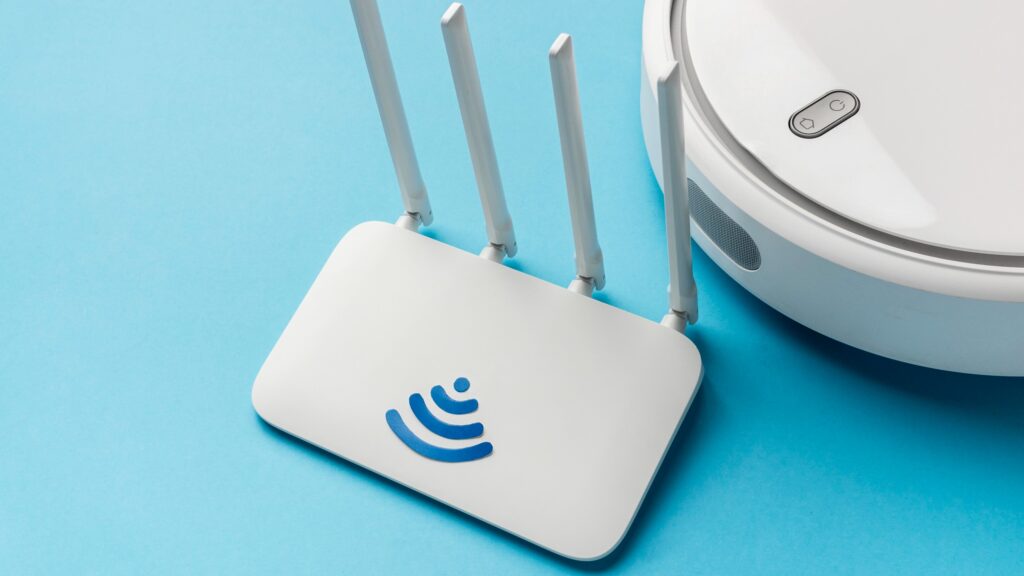Access Point is one of the innovations in wireless network technology that facilitates wireless connectivity in various environments including in complex business environments. This article will discuss the definition, functions, and types of Access Points in providing wireless internet access. In addition, we will explore why monitoring Access Points is an important factor in maintaining efficient wireless network performance and security.
What is An Access Point?
Definition of Access Point is a network device that can connect wireless-enabled devices with wired networks (internet).
In office areas or large buildings, companies use access points to create wireless local area networks, or WLANs.
In addition, how an access point works by connecting to a wireless router, switch, or Hub via an Ethernet cable to project a Wi-Fi signal to a designated area. When a wireless device, such as a laptop or smartphone, looks for an available Wi-Fi network, the access point will detect the signal and allow the device to connect to the network securely.
The Function of Access Points
Here are some access point functions that you should know:
1. Connecting wireless devices to a wired network
Access Points function to connect wireless devices such as laptops, smartphones, or tablets to wired networks to access network resources such as the internet.
2. Works as DHCP or Dynamic Host Configuration Protocol
Access Points can automatically assign an IP address to a device that will be connected.
3. Increase network coverage and capacity
Access Points expand the coverage of a wireless network by adding them to the network, enabling them to cover a wider area. Additionally, Access Points can increase network capacity when many devices are connected.
4. Provide authentication and encryption
Access Points can provide authentication and encryption so that only authorized devices can connect to the network. This is important for maintaining the security of the Wi-Fi network.
5. Improve signal speed and quality
By using multiple smart devices of Access Points, you can improve wireless signal speed and quality, especially in dense Wi-Fi networks.

Types of Access Points
According to ComputerNetworkingNotes, we can divide access points into three types based on their function:
1. Standalone Access Point
Standalone Access Points can usually be found in commercial enterprises. Standalone access points have network settings that are not managed through central control. This type of Access Point can work independently and route traffic to the nearest internet gateway or directly to the internet, providing the same functionality in a wireless network by a Switch or Hub in a wired network.
2. Multifunction Access Point
Multifunction Access Point is a combination of two or more devices. It combines an Access point, an Ethernet switch, and a router. Functionality is established between the devices combining with the access point to provide additional functionality to the access point.
3. Controlled Access Point
Controlled Access Points are devices that are controlled through a network controller with a centralized configuration. In this configuration, the controller is responsible for the management, authentication, security, settings, and monitoring of all Access Points on the network.
Modes of Access Point Devices
Here are some modes of access point devices that you should know:
1. Access Point Mode
Access Point Mode is a device that can connect wireless and wired networks, such as routers or switches. This type of Access Point can work by connecting via an Ethernet cable. We will often find this type of Access Point in places that provide wired networks.
2. Repeater Mode
Access Points in repeater mode are functioning to increase the range of wireless signals with the same SSID (Service Set IDentifier) and maintain a similar level of security. Usually, users employ this mode to amplify the signal in locations with existing wireless networks, enabling the signal to reach areas that were previously difficult to access.
3. Client Mode
Access Points in client mode can usually be found on electronic devices that have Ethernet ports, such as PCs, laptops, etc.
4. Bridge Mode
Access Points in bridge mode work by forming an independent network via one internet connection for two groups. This mode also picks up wireless signals and transmits them using the same SSID and similar passwords. This type of Access Point is commonly found in places such as housing, cafes, and offices that provide services without requiring a password.
5. Wireless Router Mode
Access Points with wireless router mode can share internet connections to several clients at the same time. In this mode, there is only one Wide Area Network (WAN) port that supports various types of connections.
How to Monitor Access Point
In conclusion, Access Points make it easy to provide wireless networks in various environments. The use of Access Point devices in a corporate environment must always be ensured to be optimal to avoid problems while connected to the network. One of the best solutions to keep your Access Point device optimized is to use a network monitoring tool.
We recommend Netmonk Prime, as a network monitoring tool that you can rely on. Netmonk Prime has a network monitoring module, which can monitor various network devices including Access Points. The advantages of Netmonk Prime are real-time monitoring, proactive notifications, and reports that can be downloaded in PDF format. Very helpful for your company’s IT team, right? Let’s use network monitoring now!
References:
https://www.coolblue.nl/en/advice/access-points.html
https://www.linksys.com/gb/what-is-a-wifi-access-point.html
